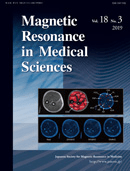
Magnetic Resonance in Medical Sciences
Scope & Guideline
Fostering Collaboration for Breakthrough Discoveries
Introduction
Aims and Scopes
- Advanced Imaging Techniques:
The journal publishes studies on cutting-edge MRI techniques, including diffusion-weighted imaging, 4D flow MRI, and synthetic MRI, highlighting their clinical applications and benefits. - Clinical Applications of MRI:
Research articles often focus on the application of MRI in diagnosing and monitoring various medical conditions, including cancer, neurological disorders, and cardiovascular diseases. - Quantitative Imaging and Analysis:
A significant emphasis is placed on quantitative imaging techniques, such as T1 and T2 mapping, and radiomics, which enhance the diagnostic capabilities of MRI. - Innovative Reconstruction Methods:
The journal explores advancements in image reconstruction algorithms, including deep learning and compressed sensing, aiming to improve image quality and reduce acquisition times. - Role of MRI in Multidisciplinary Approaches:
Research often discusses the integration of MRI with other imaging modalities and therapeutic techniques, emphasizing a holistic approach to patient care.
Trending and Emerging
- Artificial Intelligence and Machine Learning:
There is a growing trend toward integrating AI and machine learning in MRI, particularly in image reconstruction, analysis, and interpretation, enhancing diagnostic accuracy and efficiency. - Radiomics and Quantitative Imaging:
Research on radiomics, which involves extracting quantitative features from medical images for predictive modeling, is gaining traction, reflecting its potential in personalized medicine. - Advanced Diffusion Imaging Techniques:
Emerging studies are increasingly focusing on advanced diffusion imaging methods, such as diffusion tensor imaging (DTI) and intravoxel incoherent motion (IVIM) imaging, which offer insights into tissue microstructure. - Functional MRI Applications:
There is a rising interest in functional MRI (fMRI) applications, particularly in understanding brain connectivity and dynamics, which is crucial for neurological and psychiatric research. - MRI in Personalized Medicine:
Research exploring the role of MRI in tailoring individualized treatment plans, especially in oncology and cardiology, is becoming more prominent, reflecting a shift towards precision medicine.
Declining or Waning
- Traditional Imaging Techniques:
There has been a noticeable decrease in publications focusing solely on conventional MRI techniques without the integration of advanced methods or hybrid imaging approaches. - Basic MRI Physics Studies:
Research that primarily discusses fundamental physics of MRI without application to clinical scenarios has become less prominent, as the field increasingly emphasizes practical, clinically relevant applications. - Single-modal Imaging Approaches:
Studies focusing exclusively on MRI without considering multimodal imaging strategies (e.g., combining MRI with PET or CT) are less frequently published, as the trend moves towards comprehensive diagnostic solutions.
Similar Journals

MAGNETIC RESONANCE IMAGING
Elevating Knowledge in Nuclear Medicine and ImagingMAGNETIC RESONANCE IMAGING, published by Elsevier Science Inc, stands at the forefront of research in the fields of Biomedical Engineering, Biophysics, and Radiology, Nuclear Medicine and Imaging. Since its inception in 1982, the journal has become a vital resource, currently enjoying a Q2 ranking in its respective categories as of 2023, underscoring its influence and significance within the scientific community. With an ISSN of 0730-725X and an E-ISSN of 1873-5894, it provides an essential platform for disseminating groundbreaking studies and advancements in magnetic resonance imaging technology and applications. Researchers, professionals, and students benefit from its comprehensive articles that address both theoretical advancements and practical implementation in clinical settings. The journal's commitment to advancing knowledge is reflected in its recognition in Scopus Rankings, where it lies in the 67th percentile for Radiology, Nuclear Medicine and Imaging. By fostering an environment of critical dialogue and innovation, MAGNETIC RESONANCE IMAGING remains a cornerstone publication for those dedicated to pioneering the future of imaging science.
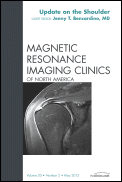
Magnetic Resonance Imaging Clinics of North America
Transforming the future of imaging with impactful research.Magnetic Resonance Imaging Clinics of North America, published by W B Saunders Co-Elsevier Inc, serves as a vital resource in the field of radiology, nuclear medicine, and imaging. With a Q2 ranking in the 2023 category quartiles, it reflects its significance and contribution to advancing the understanding and applications of magnetic resonance imaging. Established in 1993, this journal has continuously provided insightful reviews and clinical techniques that bridge the gap between theoretical research and practical application, making it essential for both seasoned practitioners and emerging professionals. Although it does not offer open access, the journal boasts a robust readership due to its high-impact research articles and comprehensive reviews, facilitating the ongoing education and development of its audience. Operating out of Philadelphia, PA, this journal aims to enhance clinical practices and patient care through disseminating cutting-edge knowledge in MRI.
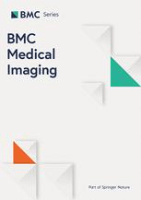
BMC MEDICAL IMAGING
Transforming Medical Imaging with Collaborative Research Insights.BMC Medical Imaging is a premier open-access journal dedicated to advancing the field of radiology, nuclear medicine, and imaging technologies. Published by BMC in the United Kingdom, this journal serves as a vital resource for researchers, clinicians, and students, fostering a collaborative environment for sharing innovative findings and methodologies in medical imaging. With a commendable impact factor and an impressive Scopus ranking within the top 35% of its category, BMC Medical Imaging provides a platform for high-quality research to be disseminated widely and freely since its inception in 2001. The journal aims to cover a diverse array of topics, from advanced imaging techniques to their clinical applications, enhancing the understanding and effectiveness of diagnostic practices. By contributing to the body of knowledge and facilitating open access to research, BMC Medical Imaging plays a pivotal role in shaping the future of medical imaging and improving patient care.
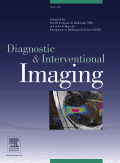
Diagnostic and Interventional Imaging
Transforming Insights into Innovative Imaging SolutionsDiagnostic and Interventional Imaging, published by Elsevier Masson, stands as a prominent journal in the fields of Radiology, Nuclear Medicine, and Imaging. With a significant impact factor and a reputation for high-quality research, this journal is dedicated to advancing the understanding and application of diagnostic and interventional imaging techniques. It has achieved an impressive Q1 ranking across multiple categories including Medicine (miscellaneous) and Radiological and Ultrasound Technology, demonstrating its esteemed position within the academic community. The journal features cutting-edge studies and reviews, reflecting the latest innovations and practices from 2012 to 2024. Researchers, healthcare professionals, and students alike can look forward to accessing valuable insights that drive forward the discipline and improve patient outcomes, as evidenced by its robust Scopus rankings placing it among the top journals in its domain.
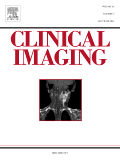
Clinical Imaging
Advancing the Future of Diagnostic ImagingClinical Imaging, published by Elsevier Science Inc, is a renowned journal dedicated to the field of radiology, nuclear medicine, and imaging. With an ISSN of 0899-7071 and an E-ISSN of 1873-4499, this esteemed publication has established its significance in advancing imaging science since its inception in 1989 and continues to make impactful contributions to the discipline through 2024. The journal holds a prestigious Q2 ranking in the category of Radiology, Nuclear Medicine, and Imaging, reflecting its critical role in bridging research and clinical practice. Currently ranked #113 out of 333 by Scopus, with a notable 66th percentile, it offers a platform for disseminating high-quality research, reviews, and case studies that inspire innovation and enhance imaging techniques. Although it primarily functions as a subscription-based journal, it remains dedicated to accessibility and the dissemination of pivotal findings that inform both academia and clinical settings. Clinical Imaging is essential for researchers, professionals, and students alike, offering insights that shape the future of diagnostic imaging.

Hong Kong Journal of Radiology
Empowering Radiology Through Open Access InnovationHong Kong Journal of Radiology, an esteemed publication of the Hong Kong Academy of Medicine Press, serves as a vital platform for disseminating innovative research in the field of radiology, nuclear medicine, and imaging. Established in 2011 and operating under an Open Access model since 2018, this journal not only promotes the sharing of knowledge but also enhances global accessibility to cutting-edge studies. With its ISSN 2223-6619 and E-ISSN 2307-4620, the journal strives to engage a diverse audience ranging from experienced professionals to aspiring scholars in the medical imaging domain. Despite its current ranking in the Q4 quartile of the Scopus category for radiology, the journal is committed to improving its standing by featuring high-quality research that addresses pressing issues in the field. The journal's convergence from 2011 to 2024 reflects its ongoing dedication to fostering academic excellence and encouraging collaborative discourse among researchers and practitioners globally. Located in Hong Kong, the journal plays a significant role in shaping the future of radiology education and practice in China and beyond.
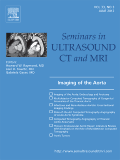
SEMINARS IN ULTRASOUND CT AND MRI
Connecting Clinicians with Cutting-edge Imaging ResearchSEMINARS IN ULTRASOUND CT AND MRI is a prestigious academic journal dedicated to advancing the fields of radiology, nuclear medicine, and imaging. Published by W B SAUNDERS CO-ELSEVIER INC, this journal has been a cornerstone of scholarly communication since 1984, providing a platform for high-quality research and review articles that enhance the understanding of diagnostic imaging techniques. With a current impact factor reflected in its Q3 quartile ranking among 333 journals in its category, it remains a valuable resource for researchers and clinicians alike. The journal's focus includes but is not limited to innovations in ultrasound, computed tomography, and magnetic resonance imaging, making it essential for professionals looking to stay at the forefront of imaging science. While it operates under a subscription model, its extensive archive of influential articles ensures ongoing access to critical knowledge and developments in the field. With a commitment to quality and relevance, SEMINARS IN ULTRASOUND CT AND MRI continues to contribute significantly to the evolving landscape of medical imaging.

EUROPEAN RADIOLOGY
Illuminating the Path to Radiological AdvancementEUROPEAN RADIOLOGY, published by SPRINGER, stands as a prestigious international journal in the field of radiology, nuclear medicine, and imaging, with an impressive impact factor that underscores its significance among peers. With an ISSN of 0938-7994 and an E-ISSN of 1432-1084, this journal provides a platform for cutting-edge research and advancements in medical imaging from 1991 to 2024. Recognized as a Q1 journal in both general Medicine and the specialized Radiology category by 2023, EUROPEAN RADIOLOGY ranks an impressive #17 out of 333 in its field according to Scopus, placing it in the 95th percentile. While it does not currently offer Open Access options, the journal remains essential reading for researchers, professionals, and students striving to stay at the forefront of developments in diagnostic imaging and related technologies. By contributing to a comprehensive understanding of radiological practices, EUROPEAN RADIOLOGY plays a crucial role in shaping the future of medical diagnosis and patient care.

Imaging
Elevating Standards in Imaging ResearchImaging, published by AKADEMIAI KIADO ZRT, is an esteemed open-access journal dedicated to the field of medical imaging, established in 2020. With an E-ISSN of 2732-0960 and based in Budapest, Hungary, this journal provides a vital platform for the dissemination of cutting-edge research and advancements in imaging techniques, especially in the realms of radiology, nuclear medicine, and ultrasound technology. While currently positioned in the Q4 category across multiple medical specialties, the journal continues to strive for improvements in visibility and impact, contributing to the evolving discourse in medical imaging. The journal aims to facilitate an inclusive and collaborative environment for researchers, professionals, and students, inviting them to share their findings and insights to enhance the field's development. With open-access availability since its inception, Imaging ensures free and easy access to its content, fostering a greater understanding and appreciation of innovative imaging practices worldwide.

EUROPEAN JOURNAL OF RADIOLOGY
Innovating Radiology for a Healthier FutureThe European Journal of Radiology, published by Elsevier Ireland Ltd, is a premier peer-reviewed journal in the fields of radiology, nuclear medicine, and imaging. Established in 1981, it has carved a significant niche within the academic community, showcasing innovative research that enhances medical imaging practices and improves patient care. With an impressive ranking in the Q1 category for both Medicine (miscellaneous) and Radiology, Nuclear Medicine, and Imaging in 2023, the journal is recognized globally for its commitment to advancing scientific knowledge and improving imaging methodologies. The journal's Scopus ranking of #60/333, placing it in the 82nd percentile, underlines its reputation for high-quality research and scholarly contributions. While traditionally a subscription-based journal, it continually evolves to meet the demands of the academic landscape, aiming to bridge the gap between research and clinical practice. Researchers, healthcare professionals, and students alike can benefit from exploring its extensive archives and current publications, which are curated to foster education and innovation in the medical imaging domain.